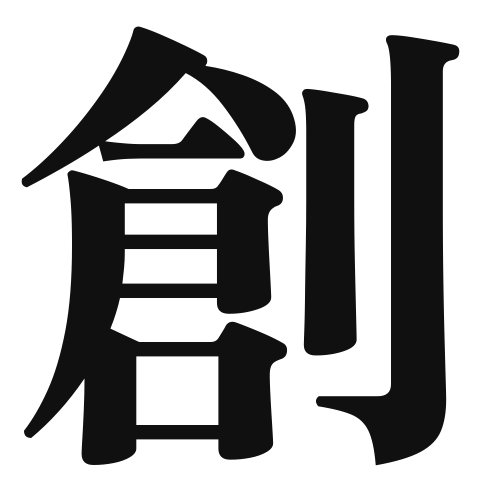1. Overview of Meaning
The kanji “創” (sō) means “to create” or “to establish.” It embodies the idea of bringing something new into existence, whether it be art, ideas, or even businesses.
2. Formation and Radicals
The kanji “創” is composed of two parts: the radical “刀” (katana, meaning “sword”) on the left, which suggests cutting or shaping, and the character “創” itself, which indicates the act of creation. This kanji can be classified as a compound character (会意文字), as it combines elements to convey a unified meaning.
The radical “刀” is often associated with actions that involve cutting or shaping, reinforcing the concept of creating something new.
3. Examples of Usage
Common words that include “創” are:
- 創造 (sōzō) – creation
- 創業 (sōgyō) – founding a business
- 創作 (sōsaku) – creative work
In everyday conversation, you might say:
「彼は新しいアートを創造しました。」
(He created a new piece of art.)
4. Synonyms and Antonyms
Similar kanji with related meanings include:
- 製 (sei) – to manufacture, which focuses more on the process of making rather than the act of creation.
- 発明 (hatsumei) – invention, which implies creating something that did not exist before.
Antonyms include:
- 破壊 (hakai) – destruction, which means to destroy or dismantle something.
5. Cultural and Historical Background
The kanji “創” is deeply rooted in Japanese culture, often associated with innovation and artistic expression. It reflects the value placed on creativity in various fields, from traditional arts to modern technology.
In proverbs and idiomatic expressions, “創” can be found in phrases that emphasize the importance of creation and originality, such as:
「創意工夫」 (sōi kufū) – ingenuity and creativity.
This highlights the cultural significance of creativity in Japanese society.
